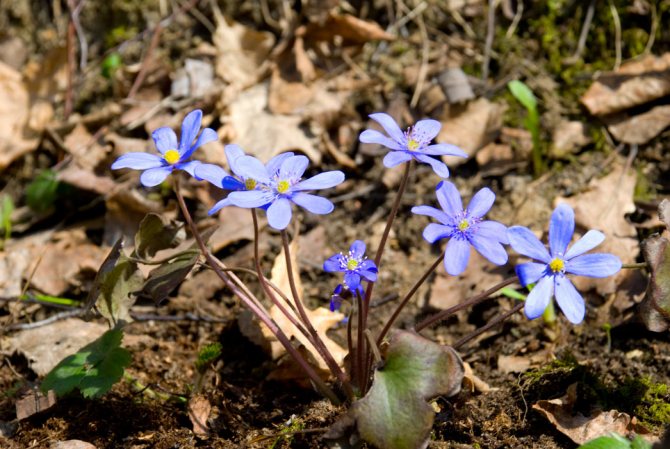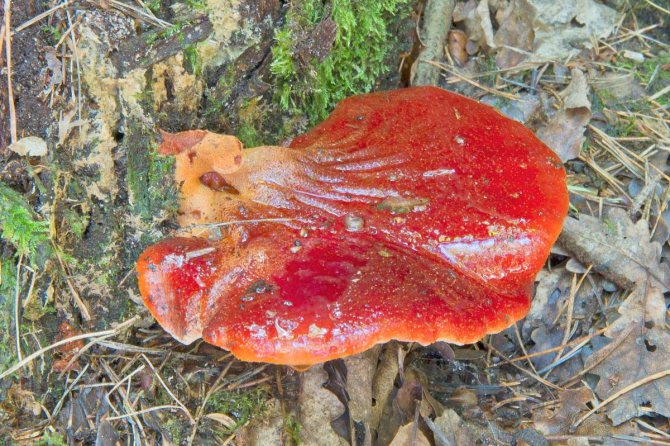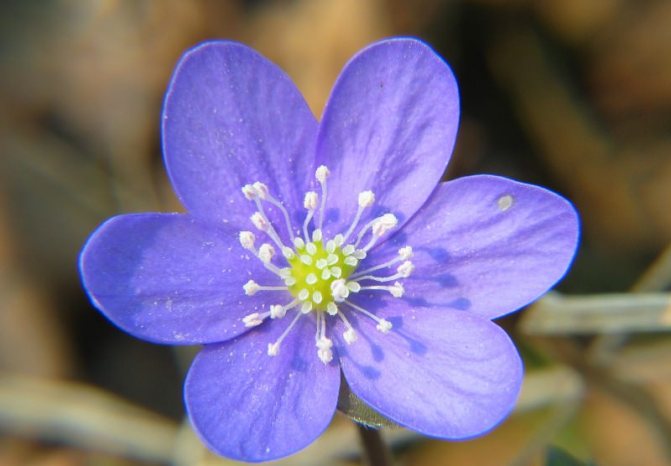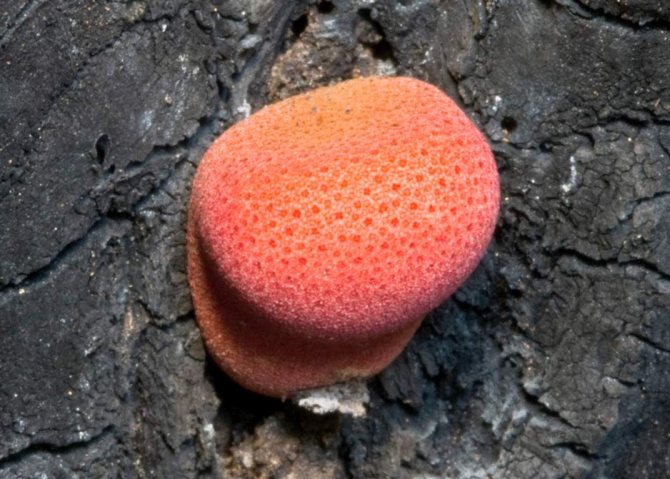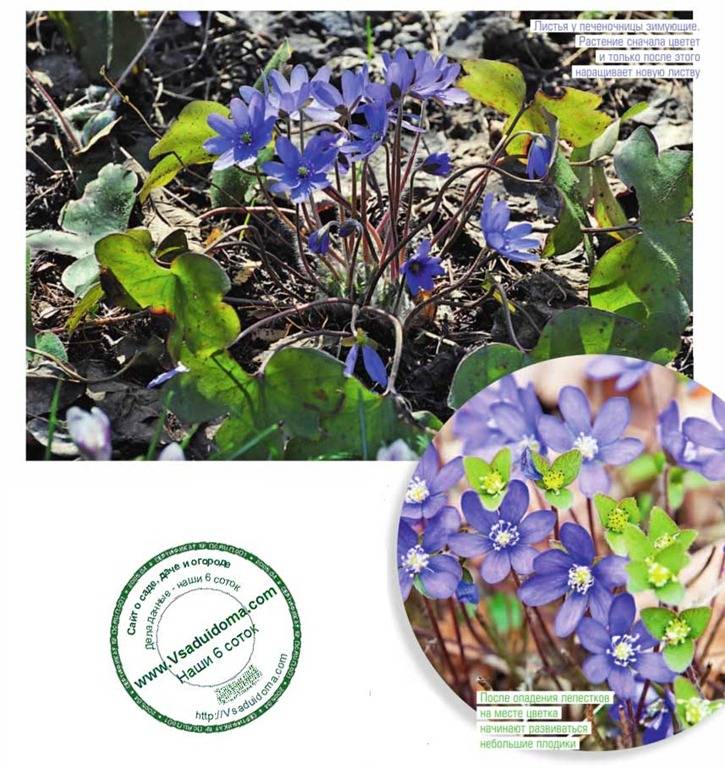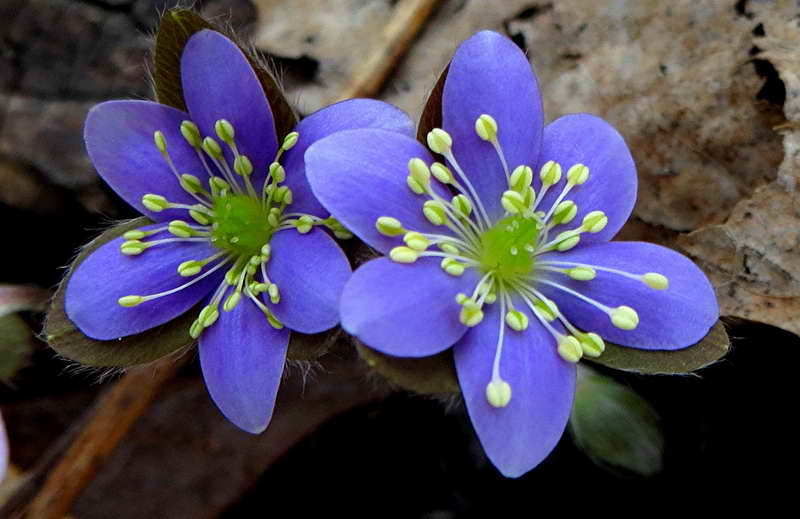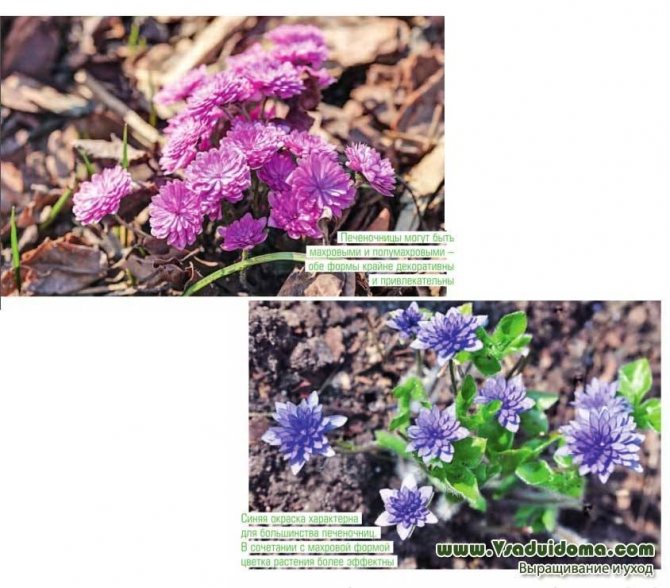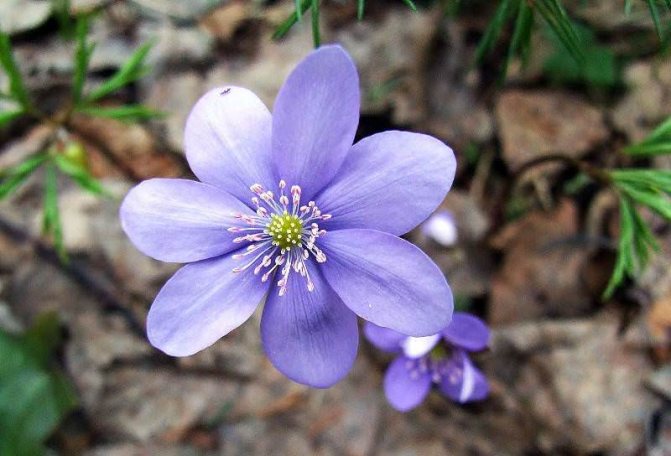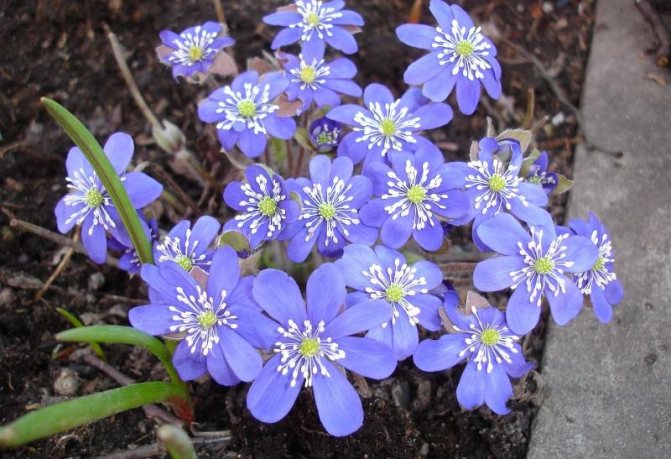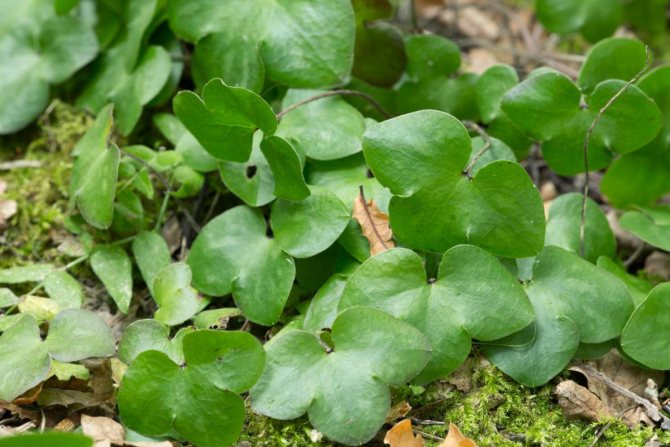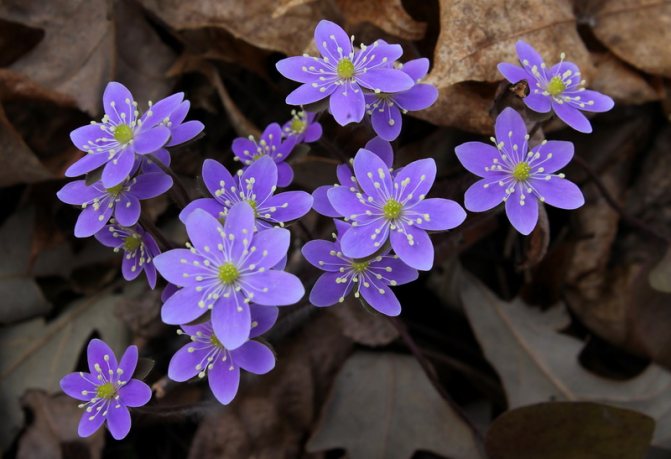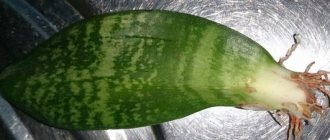Perhaps the noble liverwort can be called the most beautiful perennial plant that appears in the spring immediately after the snow melts. Even one bush, planted in the garden, attracts the eye and cheers up. However, the flower is especially effective in mass planting, when fragrant living carpets are formed.
It is this species that has become most widespread in culture (since 1440). Since ancient times, the blue flowers of the liverwort have adorned the gardens of the European nobility. Read on to learn how to grow a flower on your site and how to care for a plant.
Botanical reference
But from enthusiastic praise, let's move on to a more detailed acquaintance with the liverwort. This flower belongs to the Buttercup family, where there are so many beautiful and early flowering plants. It should be noted that many of our favorite perennials come from this wonderful family. The genus liverwort is small - only about 10 species of perennial herbaceous plants, found mainly in the northern hemisphere in a temperate climate. All of them are primroses growing under the forest canopy. In our country, only one species lives - the noble liverwort. Liverwort in the forest In early spring, flowers appear, at the same time they develop leaves, and the plant forms a rather dense curtain no more than 15 cm high. After flowering, it is decorated with dark green, almost leathery leaves. The underground organ is a short tuberous rhizome. The flowers of the liverwort are small - about 2 cm in diameter, have many petals. In the center there are stamens, at the ends of which they sit like beads - this is characteristic of many buttercups and greatly adorns their flowers. Flowering lasts 2-3 weeks, then the seeds begin to set.
In winter, the plant leaves with green leaves, they begin to die off only in spring, when new leaves are formed in their place. So it is advisable to cut off the old leaves before the buds appear, so that the flower shows itself in all its glory. Liver leaves Gardeners and lovers of beautiful flowers have long noticed this plant, began to grow it in gardens and create new forms. In Europe, the liverwort began to be bred from the 15th century, but mainly for medicinal purposes - it was considered useful for the liver. The Japanese began to grow for the sake of beauty in the 17th century, and then began to develop new varieties. Now in Japan, exhibitions of flowering liverworts are held annually. Let's consider some representatives of this genus.
Using the liverwort for distillation
In winter, at home, you can also get a flowering liverwort. To do this, 5-8 year old bushes in the summer are carefully planted in pots with a lump of earth so as not to damage the roots. The pots are placed in a greenhouse or dropped in the garden. In November-December, they are brought into a cool room with a temperature of 0 to 5 degrees (on a heated loggia, in the basement or in the refrigerator on the lower shelf). When it is necessary to start the forcing process, they are transferred to a warm room. After about 3 weeks, the plants will bloom.
Noble liverwort
It is this species that grows in the European part of our country - noble liverwort (Hepatica nobilis). It is also found in Western Europe.The liverwort is an inhabitant of forests, more often of broad-leaved ones: here, under the crowns of trees and in the soft forest floor, she is very comfortable and cozy. Although it is not capricious and can grow both in open sunny areas and in strong shade. Dislikes only damp lowlands with stagnant water. He prefers loose soil and preferably with an admixture of lime. White flowers of the liverwort The liverwort is a very small plant, no higher than 15 cm. After flowering, leaves begin to grow actively - leathery, three-lobed (to some they seemed like a liver, hence the name), on long petioles. They stay on the bushes all summer long and go under the snow. The flowers are single, about 2.5 cm in diameter, abundantly cover the entire bush. After flowering, a fruit is formed in the form of a nut. Liverwort flower The following varieties are available:
- 'Alba - with white flowers;
- ‘Carmine’ has simple carmine flowers;
- 'Elison Spence' - blue flowers with purple stamens;
- ‘Plena coerulea’ - double blue flowers.
Ecological niche
This species is a typical representative of the European forest flora. The liverwort grows in forests of different composition: mixed, coniferous, broad-leaved or small-leaved. Much less often, it can be found in open places.
It should be noted that the noble liverwort is a flower with a fairly wide ecological amplitude. The plant can withstand significant shade and may well grow in open space. The liverwort prefers a moderate amount of moisture, so she avoids damp places. The plant is not very demanding for the soil. However, it develops best in places where the substrate is rich in lime and has a well-developed litter.
Anyone who wants to breed a liverwort on their site (regardless of the type) should remember that natural forms are short-lived. For successful cultivation, certain conditions must be created: high humidity, fertile soil. While bred garden forms are more adaptable and more durable.

Growing in the garden
Since liverworts are forest dwellers, they love loose and fertile soil, similar in composition to forest soil, containing leaf humus. When preparing such a mixture, peat and a little rotted needles from a spruce forest should be added to the planting hole - liverworts like slightly acidic soil. Liverwort at the beginning of flowering. Photo by the author Plants are planted at a distance of 20 cm. After planting, the bush is watered, mulched with peat or compost. In the future, caring for the plants is not difficult. Only in hot weather is it necessary to water and weed out in time. Before the onset of winter, the bushes should be mulched better.
Division
Plants need to be divided and planted every 5 years, preferably in July or August. The liverwort grows in a rather dense bush, which becomes a little larger every year. However, it does not form daughter processes well, therefore, the division is carried out as follows: the plant is dug up and the rhizome is carefully divided into parts so that 2-3 buds are preserved on each. Delenochki Liverwort Planted delenochki must be watered and it would be good to shade. If the delenki turned out to be small, it is better to root them in the greenhouse. The next year after transplantation, new plants bloom. It is advisable to divide specific liverworts by 3-4 years, and garden varietal plants can grow in the same place much longer.
Seed propagation
In June - early July, the seeds ripen at the liverwort, they should be collected and sown fresh in a shaded place in moist soil. They can germinate for more than one year. It happens that plants are self-seeding. Terry forms generally do not form seeds and reproduce only vegetatively. The beautiful liverwort Interestingly, in nature, not so many flowers are formed on one bush, up to about 15, but in the garden - up to 150 on one plant!
Where to plant
She will feel very good among the trees.For example, it can be placed under apple trees or other fruit trees, but only if their branches do not go down to the very ground. In an open area, the liverwort will also grow well, only it needs to be planted in loose forest soil and watered more often. On an alpine slide, it will look harmoniously with other low plants - here it is better to place it not at the top, but at the foot. Multi-colored liverwort Of course, all spring flowers - crocuses, bluebirds, snowdrops - will make our beauty a worthy company. Plant a liverwort in your garden, and on cloudy spring days she will look at you with the sky-blue eyes of her delicate flowers and fill you with joy and beauty.
The first among the blue.
The liverwort blooms in April, simultaneously with the very first spring flowers - coltsfoot, galanthus snowdrop, wolf bast. Each of the spring primroses has its own tricks that allow them to start flowering in the spring without hesitation. The liverwort has at least two such tricks. On the one hand, thanks to the leaves wintering in a green state, it has the opportunity to take advantage of the very first rays of the sun. On the other hand, in nature, she chooses places where there is a lot of sun before the trees unfold the foliage. The roots of the plant, I note, lie shallow, in a rapidly warming layer of soil, which is also important.
At first glance, it seems strange that the flowers of the coppice bloom all at once, and not one by one, as many other plants do, and fade very quickly. The explanation for this is simple. The plant is in a hurry to bear fruit faster, and to throw the seeds onto the still damp and bare soil. This way they have a better chance of germinating, which guarantees the flower's survival. It is curious that the erect peduncles of the liverwort, after setting the fruits, lie on the ground. Immediately after flowering, the wintered leaves of the liverwort wither, but to replace them, by mid-May new ones grow - shiny, leathery.
Liverwort: planting and care, photos of species and varieties
A beautifully flowering, winter-green herbaceous perennial from the Buttercup family - the liverwort (Hepatica) will captivate with exquisite, very delicate, blue-blue flowers. The color is so expressive that many growers tend to plant these primroses in their garden. But not all species can be “caught” on sale.
In nature, the plant lives in forests, hence the popular name "copse". The genus unites about 10 species, only a few of them are used in ornamental gardening.


Noble coppice (H. nobilis)
A rare, endangered species that can be found on the pages of the Red Book. In nature, the plant often chooses shady places, under the crowns of trees, rarely found on slightly shaded and open lawns. The noble liverwort is not picky about the ground, it grows well on calcareous, sandy and clay soils, on a forest cushion, one requirement is moderate humidity.
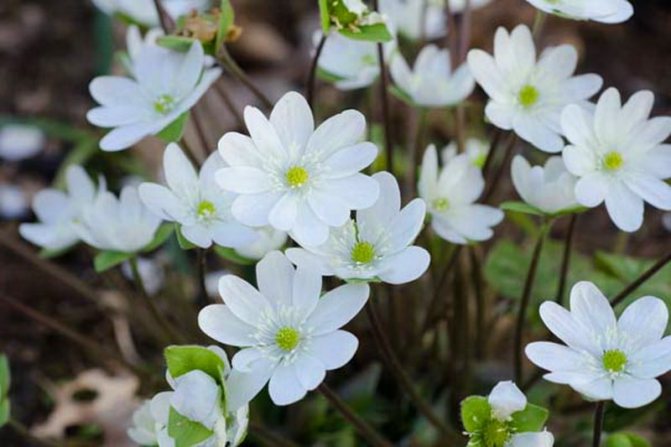

The bush is no higher than 15 cm, leaves are basal, three-lobed leathery, dark green. The species blooms in March or April, as soon as the snow melts and the sun's rays warm the earth a little. Flowers on straight stems up to 2 cm in diameter, single, they consist of 6-7 petals, and the middle is decorated with many stamens on thin threads.
The flowering period lasts about 30 days, after which all the greenery gradually dies off and new leaves actively grow to replace it. The main shades of inflorescences are blue or deep blue, but there are varieties and garden forms with a different color of flowers:
- Rosea - pale pink
- Alba - white
- Rosea Plena - pink terry;
- Rubra Plena - bright crimson terry.
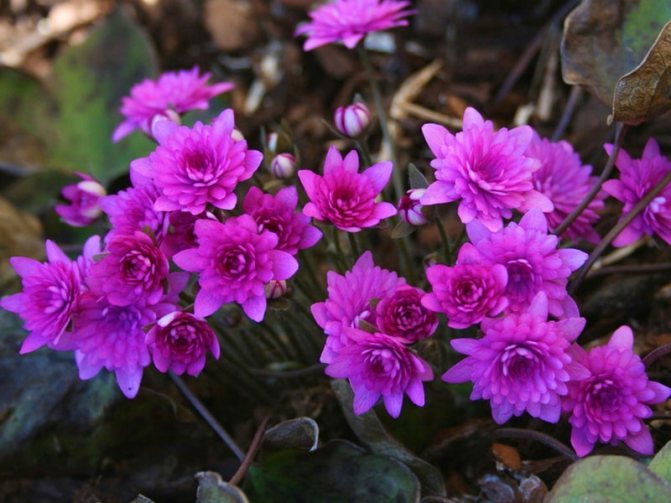

Transylvanian copse (H. transilvanica)
Shade-tolerant species with good immunity to frost, diseases and pests. Bushes up to 10 cm in height, they grow very quickly, turning into lush islands up to 20 cm wide.
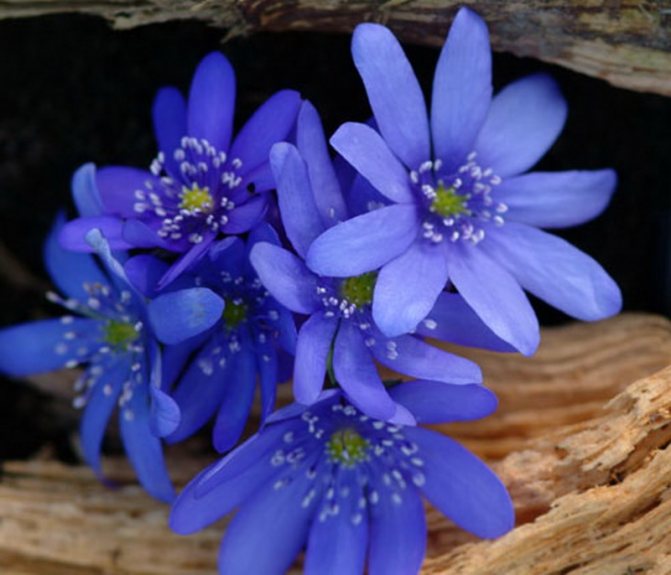

Flowers are about 5 cm in diameter, leaves are five-lobed, pubescent.Flowering begins in April and lasts about 20 days. The original form has blue flowers. Varieties:
- Ada Scott - flowers with narrow petals, dark blue;
- Blue Jewel - plant height about 25 cm, flowers are very bright, blue;
- Elison Spence - bush up to 15 cm, bluish-blue flowers;
- Alba - maximum height 18 cm, white flowers;
- Lilacina is a bush up to 20 cm in height, pink flowers.
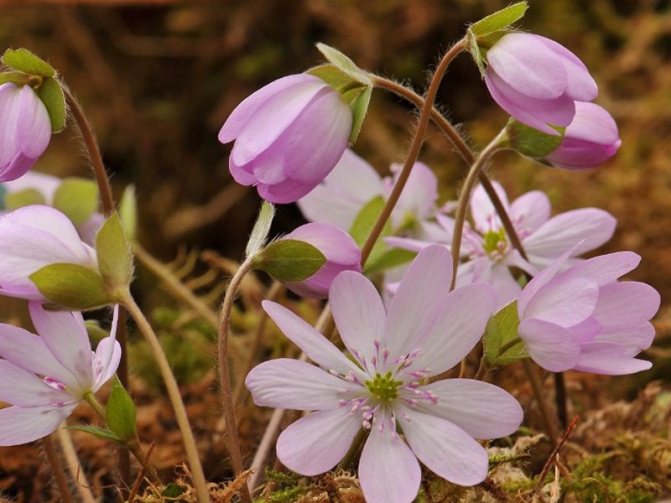

Medium coppice (Hepatica × media)
A hybrid of the species described above, is very popular among flower growers. The bush grows slowly, the maximum plant height is 10 cm, the leaves are three-lobed, dark green, the flowers are double saucer-shaped. The flowering period begins, like in related species, in April, but lasts much longer. Varieties:
- Ballardii - deep blue flowers;
- Millstream Merlin - simple, blue flowers.
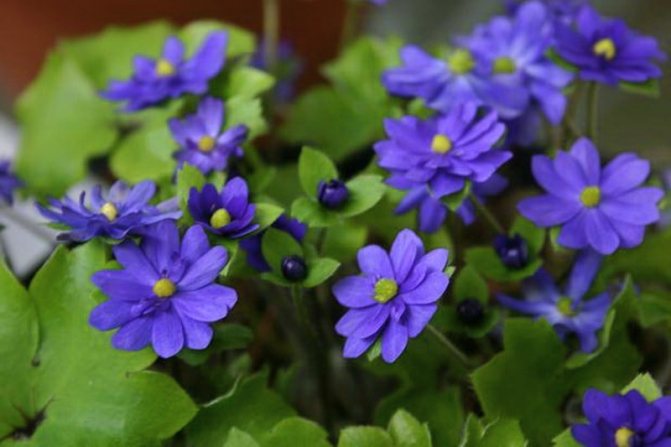

Asian coppice (H. asiatica)
This species is often found in the coastal region, only its foliage dies off for the winter. The bush is not higher than 15 cm, it grows slowly. Leaves are leathery, first brownish-pinkish, then deep green. The flowers are white or pink, rarely blue. The Asian liverwort blooms for about 20 days in April or May. This species does not form seeds in culture.


On sale you can find a series of liverworts from European nurseries, such as Red Forest, Pink Forest and Blue Forest, all of them have bright spots on the leaves and ordinary flowers of various shades.
There are also many extremely beautiful varieties of Japanese breeding (Hepatica japonica). They have incredibly terry varieties with filigree two- and three-color colors (for example, varieties Sousyunka, Kuro Taiyo, Aikawa, Sennin, Kiko, Daishihou, Tori no Saezuri, Yuunagi, Haruno awayuki).
In our country, for now, the realities are such that in nurseries and breeders on packages more often come across not the names of varieties, but their descriptions. For example, "hepatica white, terry" or "blue terry", etc. In such specimens, the variety is unlikely to be identified.
Other types of liverworm
In addition to the noble liverwort, there are the following types of plants:
Transylvanian liverwort (Heratika transilvanika), which is native to Eastern Europe and is distinguished by larger blue or purple flowers with more numerous petals and leaves with larger teeth.


The following species, depending on the classification, are either isolated separately, or referred to as subspecies of the noble liverwort.
Asian liverwort (Heratika asiatica), according to different classifications, either allocated to a separate species, or belonging to the subspecies of the noble liverwort. It has white, pink and purple flowers. It grows in the Far East, Japan, China and Korea.
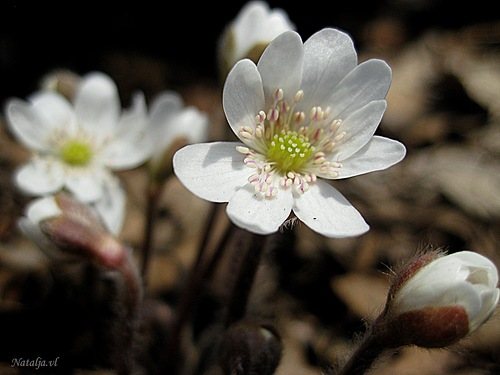

Pubescent liverwort (Heratika pubescens), has rounded variegated leaves.
Japanese liverwort (Heratika japonica). Differs in a wide variety of leaves and petals (from rounded to pointed), varying degrees of doubleness of flowers. In Japan, the liverwort is especially popular, it is there that its active selection is carried out.
Pubescent liverwort (Heratika pubescens). Has rounded leaves with streaks.
Liverworts sharp-lobed and dull (Heratika acutiloba, Heratika americana), native to America. The first has large deeply dissected leaves, and large flowers with pointed tips of the petals. The second is more miniature, with rounded petals and three-lobed leaves.
In the process of breeding work, a large group of hybrids was bred on the basis of crossing the Transylvanian liverwort with other species. They are combined under the name of the average liverwort (Heratika media). These hybrids have double flowers of blue, purple, pink and white shades and are distinguished by long flowering.


Growing and care, reproduction
For the coppice, you need to highlight a shade or a slightly shaded place with fertile, permeable and non-acidic soil. In wetlands, the plant will die, but the flower does not like excessively dry soil, in such conditions it loses its leaves.
The liverwort is planted in the spring (after flowering) or in the fall. You can add compost and organo-mineral complexes (a little) to the hole.To create more comfortable conditions for the plant, plantings are mulched with coniferous or oak litter, tree bark and wood chips.
Correctly planted copses are undemanding to care. All that is needed is weed removal, mulch renewal and self-seeding control (removal of dead buds). The plant is propagated by division and seeds, with the latter you should be more careful - they very quickly lose their germination. The species liverwort reproduces well by self-seeding. Terry varieties of seeds do not have; they can only be propagated by division.
If a certain variety or species grows in isolation, then self-seeding will give seedlings of the mother plant, and under the condition of different varieties of cultivation, new forms (hybrids) may appear.
Bushes grow no earlier than 4 years after planting, just at this age you can divide the plant. The procedure is carried out in August or September, the rosettes with roots are carefully separated and transplanted to a new place so that the growth bud remains on the surface. In one place, copses grow up to 20 years.
As for diseases and pests, weakness is manifested only by the noble liverwort, it is susceptible to various fungal infections. The manifestation of ailments can be seen in the summer, foliage suddenly becomes stained and dries up. It may seem that the plant has died, however, you should not worry, until spring it will recover and again delight you with delicate flowers.
How to cook liverwort mushroom
Edible mother-in-law's tongue is actively used in cooking. There are many recipes for cooking woody liverwort, you can use it both with hot dishes and cold snacks.
How to clean a liver mushroom
Before preparing mother-in-law, the tongue must first of all be processed:
- Only the lower part of the liverwort, which has a dense structure, is suitable for eating. The soft part is completely removed with a sharp blade during cleaning; it must be cut from the edge towards the leg.
- Since the liverwort is large enough, after cleaning it is cut into several parts, so it is easier to boil and cook it.
Before cooking the liver mushroom, it must be soaked - and not less than for 8 hours. The liverwort is poured with cold water, the liquid is regularly drained and replaced with a new one. This should be done as the water turns red under the influence of the released juice.
How and how much to cook liver mushroom
After soaking, the liverwort needs to be boiled. The soaked pulp is poured with a fresh portion of water and put on fire for 20 minutes. The broth from under the mother-in-law's tongue must be drained, and the liverwort itself is used for further processing.
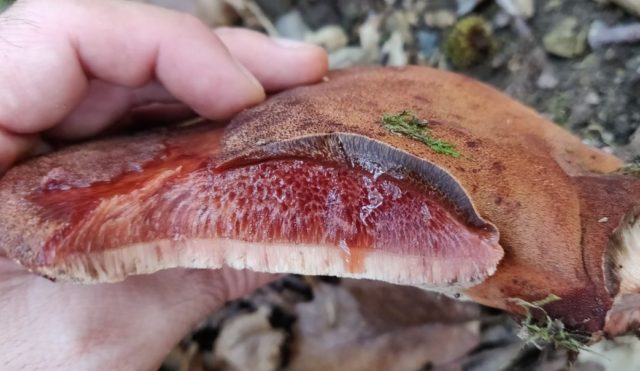

Before cooking, the liverwort needs to be soaked for a long time
What can be cooked from liverwort
Liver mushroom belongs to the category of universal, you can prepare many simple and healthy dishes from it. Recipes for liverwort mushroom suggest using it:
- as part of soups and hot snacks;
- in the second courses;
- in combination with pasta, potatoes and any cereals;
- salted and pickled.
You can cook the liverwort immediately after harvesting, or you can preserve it and use it in the winter months. In both variants, the liverwort retains valuable properties and excellent taste.
Liverwort in garden design
What colors can the liverwort be combined with? The answer is obvious - with those that bloom with her in the same period, in early spring! How good are the compositions of copses, crocuses, snowdrops, pushinias and other primroses.
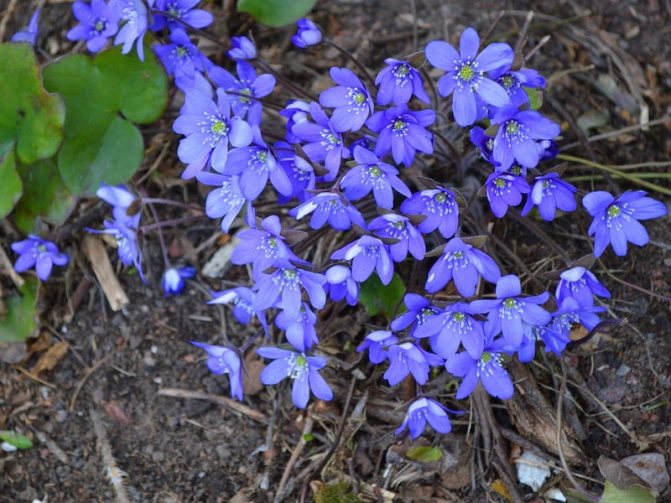

You can create an original composition where the liverworts will act as small islands of different colors. Different varieties planted in groups will create a nice contrast. Also, shaded areas of rockeries or rock gardens are decorated with copses.
The liverwort does not lose its decorative effect after flowering - during the summer, flower beds are decorated with the original lace of the leaves of the plant, which makes it possible to use it also as borders. However, it is worth remembering that copses are not able to get along with aggressive plants; such a neighborhood must be abandoned.
It can be said without exaggeration that it is advisable for the liverworm to allocate a place in each garden, because who can not love early, spring flowers, especially if they are so beautiful and absolutely unpretentious! So grow your own liverwort, planting and caring for it is really easy, and this rather rare flower will be a small contribution to the conservation of endangered plants.
Care Tips
The liverwort will not die when the soil dries out, but will shed its leaves, so do not forget about watering, especially in the second half of summer. There should be no stagnation of moisture. As in nature, perennials will need mulch: spruce bark, oak leaves, peat, pine litter.


Spring frosts are not terrible for the plant, even if frost and grass freezes underfoot, the primrose feels comfortable. But this perennial can die from aggressive weeds, so the site will have to be loosened and systematically weeded. By the way, if you are planning self-seeding reproduction, then weed very carefully. In early spring, plantings are fed 2-3 times; complex mineral fertilizers can be used.
Varieties of liverwort and photos
Hepatica is a delicate spring primrose. It can be found mainly in forests, prefers shade and moderately moist soil. In some European countries, such as Germany and Austria, this plant is protected. In the middle latitudes of Russia, the only species has taken root - the noble liverwort.
- Liverwort noble is a perennial plant, one of the few species that has taken root in the natural zone of our country. It has a bright blue or blue color, small leaves. The most famous varieties of the noble liverwort are Pink Terry and Blue Terry. The size of their flowers is much larger than that of ordinary species. The average flower height is about 20 cm.
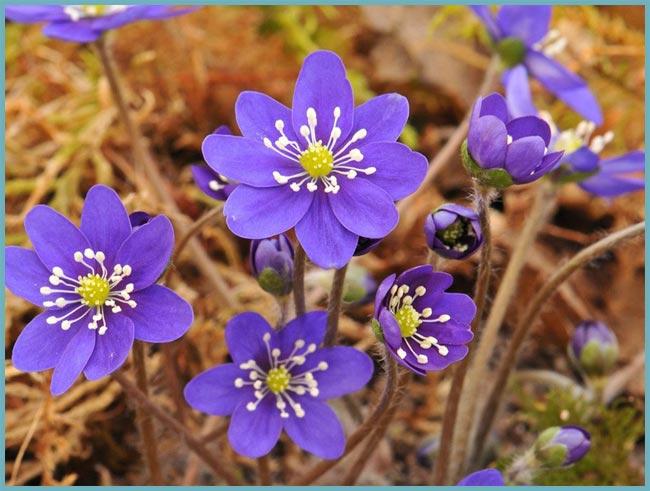

Noble liverwort - The liverwort Transylvanian is an unpretentious species common in the Carpathian forests in Romania. Resistant to frost and shade. Flowering begins in April and lasts for about a half moon. The flowers are lilac in color, less often white or pink. Loamy soil is the best option for this species. The plant does not produce self-seeding. Its most famous variety is "Blue Jewel".


Transylvanian liverwort - Asian liverwort is a perennial plant native to the Far Eastern forests, Korea, Japan and China. The flowers of the plant are predominantly white and purple. For the winter, the Asian species sheds its leaves. Flowering does not occur annually. Recently, varieties of this species have appeared from foreign countries: "White Forest", "Pink Forest", "RedForest". Their shades are snow white, pink and bright red. Experts recommend purchasing these specimens in a blooming state.
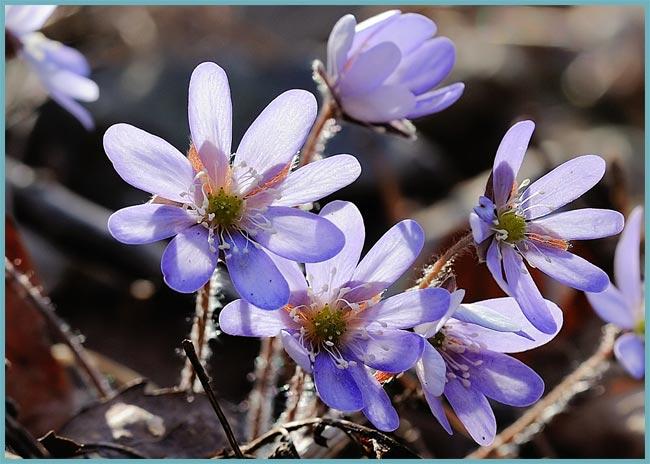

Asian liverwort - American liverwort is a representative of a perennial plant from North America. Its leaves consist of five lobes, the leaves are rounded. In appearance, its leaves seem to be half-open.


Liverwort American - Sharp-lobed - forest perennial with three-lobed leaves. Flowers are blue-white with a greenish middle and large stamens.
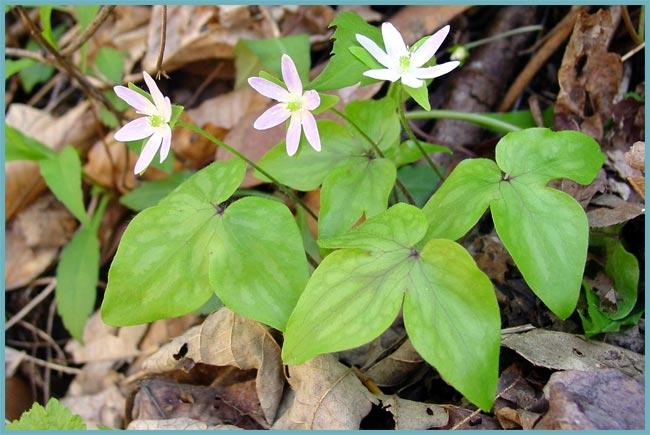

Sharp-lobed liverwort
Edible mushroom mother-in-law tongue or not
Mature liverworts are not suitable for eating because their flesh becomes too tough. But young fruiting bodies are quite edible and highly valued in cooking. They have a delicate taste with a slight sourness.
Doubles and their differences
The photo and description of the liver fungus are so atypical that it is difficult to confuse it with other mushrooms.But the liverwort also has twins, similar mushrooms with minor differences.
Bristly tinder fungus
The liverwort and the bristly-haired tinder fungus are similar in size, structure and color. However, mushrooms have fundamental differences. So, the bristly-haired tinder fungus most often has a fruiting body, which consists of several accrete caps at once. Its color is not as intense as that of a liverwort, but rather a red-orange at a young age and very dark at maturity. The flesh of the bristly-haired tinder fungus is brown, not pink, and the surface of the fungus is covered with fine hairs.
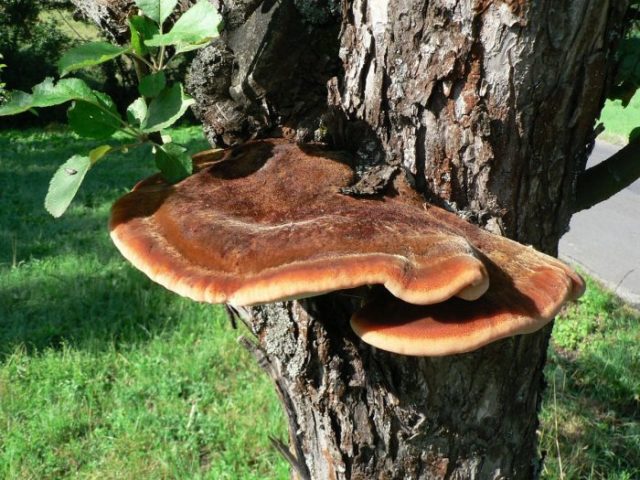

Attention! The bristly-haired tinder fungus is unsuitable for eating, since it belongs to toxic mushrooms. If confused with edible liverwort, it can lead to poisoning.
Lumpy tinder fungus
Another double of the liverwort is a tuberous tinder fungus, which grows mainly on deciduous stumps and fallen trees. The similarity between mushrooms lies in the fan-shaped structure of the cap, as well as in the tubular structure of the hymenophore.
Mushrooms can be distinguished from each other by color, the tuberous tinder fungus usually has a light brown color without a pronounced reddish tint. The lower layer of the fruiting body of the fungus becomes dark gray or brown with age.


You can also distinguish a bumpy tinder fungus by the woody smell of pulp, and you can find it on tree trunks not only in late summer and autumn, but throughout the year. The mushroom is not suitable for consumption.
Planting the liverwort
The liverwort is undemanding to places of growth. But nevertheless, it is better to grow this perennial under the canopy of trees or partial shade in the open field.
Advice. Direct sunlight and lack of watering are detrimental to the copse.
For planting to give a positive result, you must first prepare the soil. The liverwort feels great in loose and acidic soil. Therefore, you need to dig a hole and pour brown peat and rotten needles there.
Spring and autumn are the best times for planting a liverwort. It is worth waiting for the hepatica to completely bloom in the spring or start planting in late autumn.
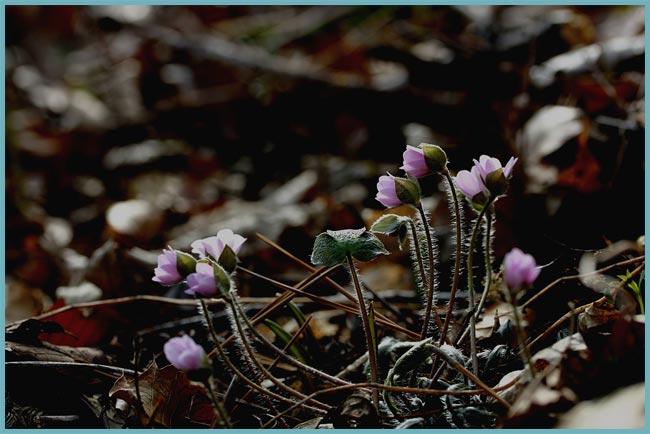

To make the liverwort feel good, plant it in shady places.
The right place is the key to the success of growing the liverwort. If it grows poorly and blooms little, then it should be transplanted to another place in the open ground.
It is better to plant a plant in open ground in groups, so it will look more spectacular. Usually, hepatics are planted in bushes of 5 pieces. And in one place without a transplant, a plant can grow for as long as 20 years.
Does the liverworm heal?
The liverworm was once considered a medicinal plant that helps with liver diseases. However, as a result of modern scientific research, the medicinal properties of this plant have not been revealed. In addition, its juice contains toxic substances, which is typical for all buttercups. Therefore, grow this plant only for decorative purposes and with a certain amount of caution.


Photo credits: Lastochka, tatiana3010, m2633, bbelara, mackeewa.nina, wleona, natalja.vl, len.shevel.
Charming liverwort in the garden: video
LIVER MOTOR or PERLESKA
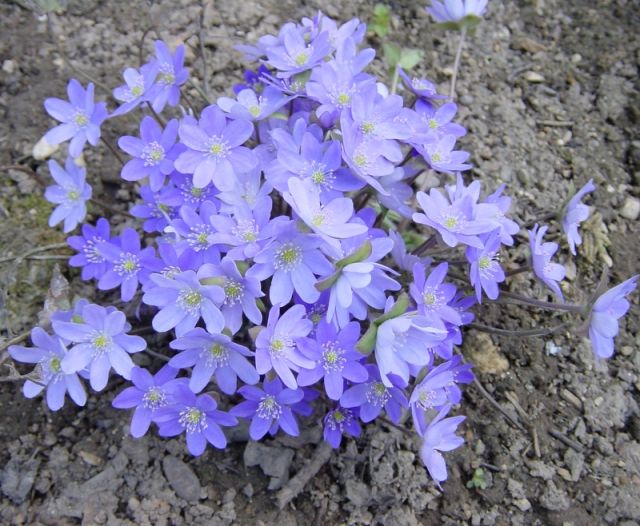

"Liverwort Transylvanian variety" Blue Jewel "PHOTO: www.dacha-
"Liverwort garden variety" Rose Pleno "PHOTO:
LIVER or PERLESKA is a low flowering herbaceous perennial plant. Found in the forests of Central Russia under the canopy of trees.
It blooms in early spring, when the leaves have not yet blossomed on the trees and there is enough sun. After the crown of the trees closes, it grows in almost complete shade on moist fertile soils, along the banks of streams. Both species of plants and new varieties and hybrids with different colors of flowers and varieties with double flowers that have appeared in recent years are cultivated in the garden.
One of the most difficult tasks for a grower is creating beautiful flower beds for different areas of the garden. To get acquainted with the ready-made author's ideas for their creation and photographs of the colors used, we suggest watching this video course!
The most popular types of liverwort:
LIVER MOTOR NOBLE OR NOBILIS:
Liverwort Noble is quite widespread throughout the European part of Russia, but in recent years it has been on the verge of extinction due to the uncontrolled digging of plants from nature for the purpose of sale, collecting flowers for bouquets, which prevents the seeds from ripening. At the same time, many plants die quickly. If you did buy a species plant, provide it with suitable conditions.
the height of the plant is not higher than 15 cm, the leaves are three-lobed, overwintering, in dissolution with a cherry tint, then they turn green. The flowers are cupped, bright blue with a lilac tint, sometimes pinkish or completely white. Flowering immediately after the snow melts, no more than 2 - 3 weeks. It is an unforgettable sight. A real primrose. In suitable conditions, it produces self-seeding. Prefers shady, fertile areas. It grows slowly. In recent years, a large number of varieties and terry hybrids have appeared, united under the name Garden liverwort with very large and spectacular flowers of bright crimson, blue-violet and white. The most popular varieties: the double variety "Rose Pleno" with bright pink flowers.
At the end of summer, the Liverwort has fully formed peduncles for flowering for next year, so it is advisable to protect them from frost by mulching for the winter. Frost resistant. Produces self-seeding, but hybrids may not retain parental qualities. Seeds are carried by ants, so the appearance is always unexpected and only where the conditions are right.
You can read my experience of growing Liverwort Noble in the article "Liverworts - blue crumbs" in the section "My experience".
LIVER ASIAN:
Recently, they began to be combined into one species or subspecies. The Asian liverwort grows wild only in the Primorsky Territory. The height of the plant does not exceed 15 cm. It differs from other species in that the growing young leaves are brownish-green. The flowers are white, rarely pink., Rather large. Flowering immediately after the snow melts, within 2-3 weeks. In one place it grows for a long time, develops extremely slowly. Winter-hardy, unpretentious, but is on the verge of extinction due to deforestation and gathering in bouquets, which prevents the seeds from ripening.
"Liverwort Japanese variety" White Forest "PHOTO: PHOTO: Anna Rubina
"Noble liverwort" PHOTO: PHOTO: OV Gryanikova
LIVER TRANSILVANE:
It is found in the wild only in the Carpathians. Differs in five-lobed wintering leaves, collected in a basal rosette. Flowers on low peduncles are bright blue, less often white or pink. Flowering immediately after the snow melts. Winter-hardy, unpretentious, blooming profusely. Duration of flowering is no more than 2-3 weeks. It grows in one place for a very long time. The most popular variety is Blue Juel with blue flowers and white stamens.
Growing liverworts - planting and care:
Location:
Under the crown of trees in the shade.
The soil:
Should be loose, fertile, moisture-absorbing, neutral or slightly acidic.
Care:
Since flowering is very early, when the snow melts, then at this moment it is imperative to shed the plant. After flowering top dressing according to the season. Throughout the season, the plant is watered and weeded.
| "Noble liverwort" PHOTO: PHOTO: OV Gryanikova | "Noble liverwort" PHOTO: PHOTO: OV Gryanikova | "Liverwort after flowering in summer" PHOTO: PHOTO: OV Gryanikova |
Winter hardiness:
High, but for the winter plantings are mulched with organic matter - rotted compost or humus, leaf litter of oak or maple, because in nature, the liverwort always grows on a leaf litter.
Growing area
Liverwort is a plant widespread in the European part of Russia, as well as in Primorye. Cold resistance has become a determining factor in the dispersal of the species to the north of Europe (Finland, Denmark, Norway, Sweden). In addition, the liverworm is common in the central (Czech Republic, Slovakia, Austria, Switzerland, Poland) and southern (Bulgaria, Albania, Italy, France, Romania, Spain) parts of the continent. In Asia, the species is found in China, about. Honshu (Japan) and Korea.
Currently, the plant has a vulnerable status on the territory of Russia. Liverwort noble is included in the Red Book in Lipetsk, Kaluga, Moscow regions. The limiting factor is the low efficiency of seed reproduction. The threat is also created by soil compaction when driving livestock or deforestation, collecting plants in bouquets.


Useful properties of liver mushrooms
The liverwort is popular in cooking not only because of its pleasant taste, but also because of its many useful properties. The mushroom pulp contains vitamins PP and D, ascorbic acid, phosphorus and potassium, a large amount of protein compounds.
With regular use, the liverworm is able to improve the work of digestion and establish metabolic processes. Eating mushroom pulp is useful for enhancing immune resistance and for protecting against colds, for cleansing and rejuvenating the body. It is believed that mother-in-law's tongue serves as a good prevention of oncology, the mushroom is also useful for anemia, it quickly makes up for the lack of valuable substances.
Limitations and contraindications
In some conditions of mother-in-law, the tongue may be harmful to the body. It is not recommended to use it when:
- gout;
- individual intolerance;
- chronic ailments of the liver and kidneys;
- gastritis with low acidity;
- a tendency to constipation.
Also, it is better to refuse the liverworm for pregnant women and nursing mothers. Children can eat mushroom dishes only after 10 years.
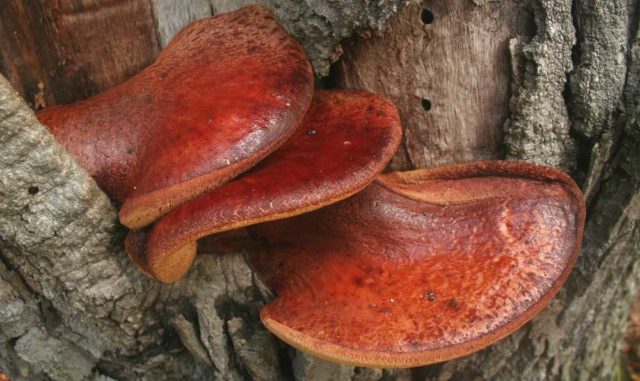

Contraindications for the common liverwort are quite few
Where to buy a plant
Images in this article are used under the Creative Commons Attribution-Share Alike 2.0, 3.0, 4.0 and Attribution-NoDerivs licenses. No changes were made to the photos.


Unfortunately, these blue-eyed beauties in nature are becoming less and less (a flower called the liverwort (Hepatica) is listed in the Red Data Books of all regions where they grow), and you rarely see them in gardens.
In the summer, under the lush greenery, you may not see the leaves of the liverwort, because by the end of the season they may die off. But in the spring you cannot pass by. Everyone saw how beautiful the liverwort looks at this time: each bush adorns up to fifty azure flowers.
And if you remember that this happens when the ground is still bare and most of the garden's inhabitants are just waking up, it will immediately become clear: the liverwort is the favorite of the spring garden. Housewives build whole multi-colored compositions from different species of this plant.
The description of the forest liverwort is found in medieval texts, it is relevant to this day. The leaves of this plant are 3-lobed, bent to the ground. Interestingly, when they just make their way out of the ground, they have a reddish tint, but when they fully develop, they become a dark green tint. They are quite dense as they contain most of the nutrients. The stem, on the other hand, is thin, it does not have a supply of water and minerals.
As for the flowers of this plant, they grow one by one in a hairy receptacle. But there are at least 10 of them on the bush itself. The color depends on the species. Natural color is blue. But the colors of garden species can be from white to lilac.
How to propagate the liverwort
The liverwort bush can be divided in the spring after flowering. And if she can't wait, then during it, it won't hurt her.
The old bush is dug up and divided into parts, shaking off the ground from the roots.Young deeds should have a good lobe of roots. As a rule, after planting in another place and watering, young delenki do not even wither, although they fade faster.
Plants can be sown with seeds, but there are some difficulties with them: either the ants take them away, then they crumble, being still green. Seeds quickly lose their germination. But, if you still manage to collect and sow seeds from interesting forms, the offspring will surprise you with an unpredictable color.
Chemical composition and properties
Liverwort noble contains: saponins, coumarins, tannins, flavonoids, anthocyanins, camphor anemonal, trace elements and pigments. Due to its composition, the plant has anti-inflammatory, antiseptic, expectorant, astringent and diuretic effects on the human body. In folk medicine, the noble liverwort is recommended for:
- colds, coughs;
- tuberculosis;
- polyarthritis, rheumatism;
- diseases caused by streptococci;
- staphylococcal skin infections, boils, skin rashes;
- infected wounds.
Also, this plant is used to stimulate the work of the gallbladder and liver and to purify the blood.
- 2 tsp dried herb liverwort noble;
- 1 tbsp. cold water.
Pour the liverwort herb with water and leave to infuse for 10 hours. Strain, warm a little and drink during the day in small sips. Infusion for external use:
- 1/2 tsp dry herb of liverwort noble;
- 500 ml of boiling water.
Pour boiling water over the liverwort herb and let it brew for an hour. Strain the resulting infusion. Use for washing ulcers and purulent wounds.
Interesting facts about the liverwort
Several interesting facts are associated with the ordinary liverwort:
- The name of the liverwort comes from the appearance of its pulp. On the cut, the fruit body of the mother-in-law's tongue is pink with red veins and very much resembles a piece of liver.
- When cut, the fresh liver mushroom releases a reddish juice - this also enhances its resemblance to a piece of meat or liver.
- The useful edible fungus is a tree parasite that causes brown core rot in trees.
The liverwort pulp contains a large amount of vitamin C - the full daily allowance for an adult is only 100 g.
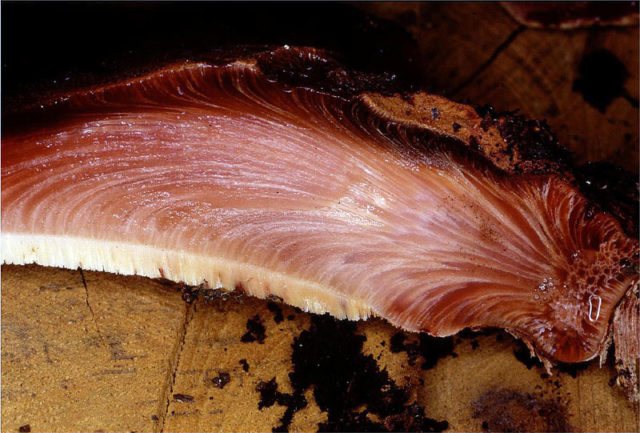

The beneficial liverwort is a parasite for the trees on which it grows
Sowing with seeds
In this way, mainly non-double types of forest are propagated. It can be liverwort noble, Transylvanian, American or sharp-headed. In terry species, the seeds usually do not ripen by the end of summer. Reproduction of the forest in this way is also not too difficult.
Seeds are harvested after they acquire a pale salad or even milky color. They can be stored in a bag with moist perlite until June. Place it in a cool place. In early summer, seeds are planted in pots filled with soil. The latter are buried in flower beds. Seeds will begin to germinate after winter stratification. Some seedlings will appear as early as next spring. Others will sit in the ground for a couple of years. The liverwort planted in this way begins to bloom at the age of about 3-5 years.
Watering newly sown seeds is done from a spray bottle. For the winter, a flower bed with plants planted in a similar way should be covered with spruce branches.
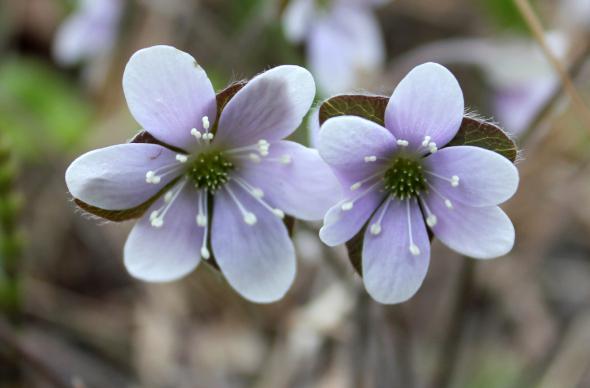

How to sow liverwort for seedlings
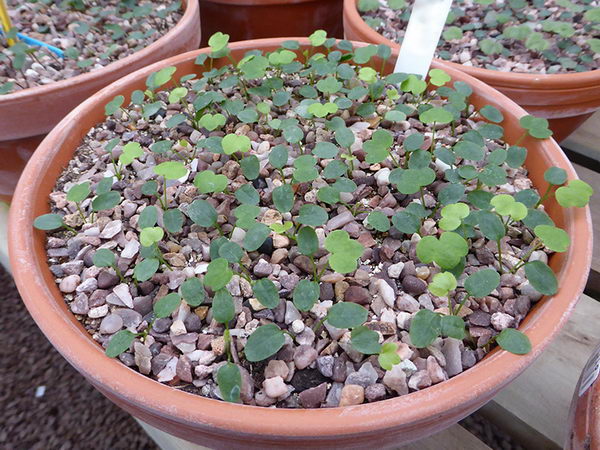

Seedling of liverwort
Usually, freshly harvested seeds are harvested and sown in June directly into the garden. But if you bought seeds, you can sow already at the end of February - March, and even April, to get seedlings for planting in the ground in the spring.
- You should take care of the good structure of the soil: so that it does not get covered with a crust, add loose organic matter and sand, if the soil is heavy, loamy. This will also be an excellent protection against drying out of the seeds.
- Spread the seeds as rarely as possible over the surface and carefully cover with a thin layer of soil.
- Moisten the surface with a spray gun, cover the container with foil.
- When the shoots of the liverwort appear, remove the film.
- Dense seedlings are thinned out so that the seedlings are strong and do not stretch out.
- Make sure there are no weeds.
- Caring for seedlings is simple: alternate watering with loosening, once every two weeks, make liquid fertilizing with any complex fertilizer that you find in the store. Organic dressings are also good.
- Temper the seedlings by arranging sunbaths for them in the fresh air. A couple of weeks will be enough for this. As soon as the bushes have 4-5 leaves, get used to the fresh air and natural conditions, they can be planted in the ground.
If you are sowing in open ground, it is advisable to mulch the garden with leaves in the fall, and remove the mulch in early spring. The sown seeds germinate only the next year.
What are the liverworms
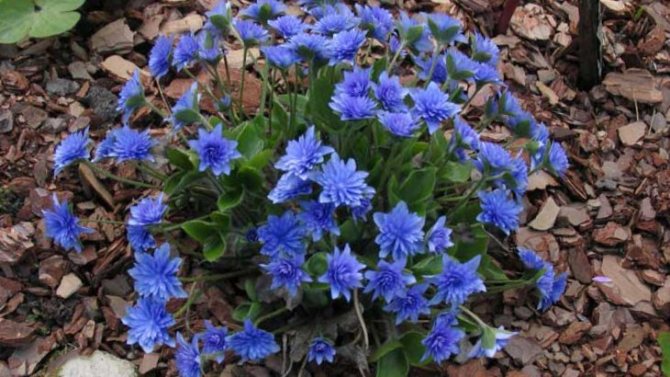

Most often in the gardens you can find noble liverwort (Hepatica nobilis), which grows in our forests. But she also has decorative forms: terry crimson and blue. They are probably over 100 years old. They surprise not only with their terry, but also with the brightness of color, more intense than that of the ordinary form of the liverwort.
In nature, you can see both pink and white flowers, and sometimes even chameleon flowers are found, which first have one color, and then change it to another.
In addition to the common liverwort, the garden is also decorated with other species that live in Europe, Asia, North America. They are all similar in appearance and care.
The first to wake up in the garden is the Transylvanian liverwort (H. transsilvanica), a Carpathian species that is distinguished by a cut leaf edge. This beautiful plant, stable in our climate, blooms along with crested and kandyks.
You can try to plant the American liverwort (H. americana) and henry (H. henryi), they, like other less known species, are quite promising for our gardens.
In addition to beautiful flowers, liverworts have another advantage: some species have beautiful leaves. In Japanese varieties and in Pyrenean and Asiatic liverwort, white spots are scattered on the leaves, which last the whole season. This means that these types of liverwort are decorative-leaved plants that will decorate the garden after flowering.
These plants are loved in Japan, new very beautiful varieties of Japanese and Asian liverwort are being bred there, which are rare in our country, since they are fabulously expensive. They can only be afforded by collectors who do not spare money for exotic novelties.
The leaves of the liverwort are hibernating, but sometimes they undermine in the winter, but new, bright and young ones grow back. So foliage pre-warming cannot be attributed to the minuses.
Combination with other plants
Liverwort and other varieties look great with Christmas trees and other conifers. At the same time, with such neighbors, it will multiply very quickly, and a wonderful carpet will very soon form on your site. You can add decorativeness to the site by planting weeping coniferous shrubs and trees.
Bulbous flowers are also a good option. You can try planting a primrose with varieties such as:
- hellebores;
- crocuses;
- mesh iris;
- chionodox;
- adonis;
- snowdrops.
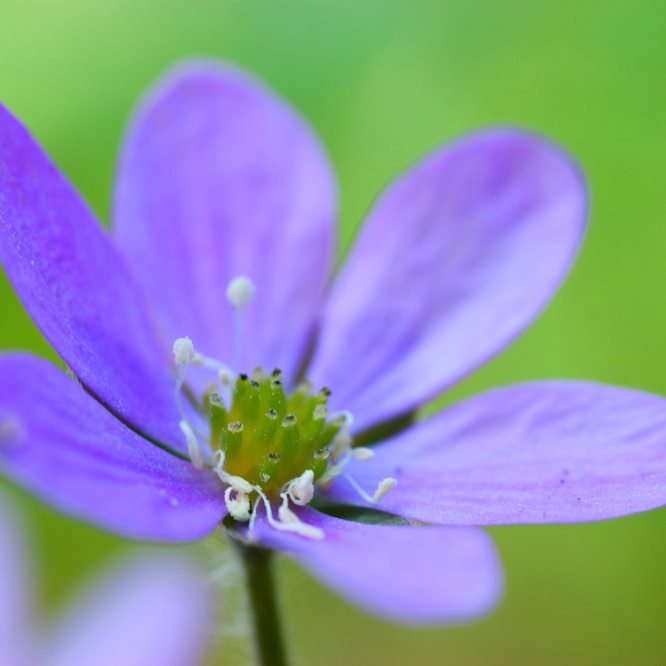

The huge yellow-green flowers of butterbur and liverwort look great. Butterbur will be an excellent backdrop for small primroses and protect them from the scorching sun.
The plant also looks good when surrounded by fir and Kurai willow, as well as in joint planting with powdery mountain ash.


How to cook liverwort mushroom: recipes for every day
Basically, the liver mushroom is fried, this cooking method is the easiest. There are quite a few recipes for cooking liver mushroom, so you can often use mother-in-law's tongue and not be afraid of monotony.
How to fry liver mushroom with onions
A simple and budget recipe suggests frying mushroom pulp with onions. The algorithm looks like this:
- pre-boiled liverwort is cut into small pieces;
- grease a preheated pan with oil and pour mushroom pulp and 300 g of onions, cut into half rings, onto it;
- the liverwort and onions are fried for 20 minutes;
- a couple of minutes before cooking add 2 bay leaves, salt and pepper to your taste.
The finished dish goes well with pasta and potatoes.
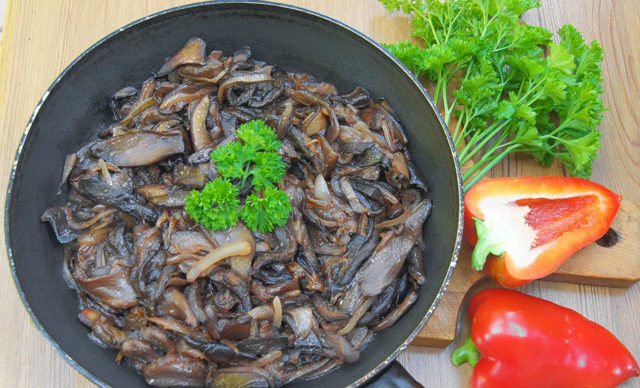

The easiest way to fry an ordinary liverwort with onions and herbs
How to fry liver mushrooms with sour cream
One of the most delicious recipes is to fry the liverwort with sour cream. The recipe looks like this:
- fresh mushrooms are cleaned, soaked and boiled for 20 minutes;
- boiled mushrooms are washed in cold water and cut into thin strips;
- the mushroom pulp is fried in a pan for about 15 minutes;
- then add the chopped onions and fry until the onions are golden brown.
After that, 2 tablespoons of sour cream in equal amounts are diluted with water and pour mushrooms and onions, salt and pepper to taste. It takes about 5 minutes to stew the dish, then add a little finely chopped dill to the mushrooms and sour cream, mix, cover and remove from the stove.
How to cook fried liverwort mushrooms with potatoes
It turns out very tasty if you cook a liver mushroom in combination with crumbly potatoes:
- Boiled mushrooms in the amount of 1 kg are cut into thin slices.
- Dice 500 g of boiled potatoes and 2 onions.
- The mushroom pulp is fried in a pan until the moisture evaporates.
- Then add 2 large spoons of quality sunflower or olive oil, put onions and potatoes in a pan and fry the ingredients together until golden brown.
The finished dish is salted and pepper to taste, and greens and a little sour cream can also be added to the liverwort a couple of minutes before being ready.
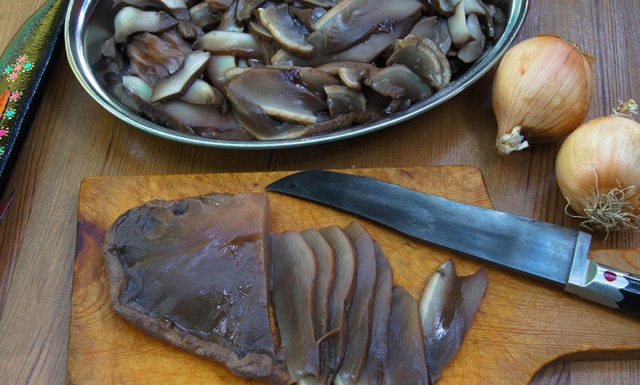

Liverwort goes well with potatoes and vegetables
Cooking liver mushroom cutlets
Nutritious cutlets can be made from mushroom pulp, which are in no way inferior to meat ones in taste. This requires:
- boil the liverwort, and then pass it through a meat grinder along with 1 large onion;
- add a raw egg, a little flour and salt to the resulting minced meat;
- make ordinary cutlets from a viscous thick mixture and roll them in flour or breading;
- fry in an oiled frying pan until golden brown.
Advice! To improve the taste, you can add a slice of hard cheese or butter to the middle of each patty. In the latter case, the cutlets will turn out to be more tender and juicy.
How to cook stewed liver mushrooms with carrots and cauliflower
Mother-in-law's tongue is very tasty if you stew it along with vegetables. For this you need:
- boil and fry fresh mushroom pulp in olive oil;
- in a separate frying pan, stew under the lid a couple of large tablespoons of fresh chopped carrots, no more than 200 g of cauliflower and the same amount of boiled beans, preferably white;
- mix mushrooms and vegetables, then season the hot dish with butter.
You can eat the cooked product along with potatoes or pasta, or you can eat it in its pure form.
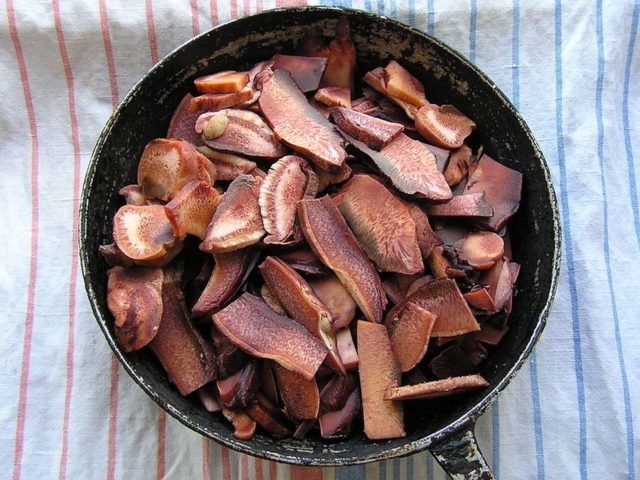

Tasty and hearty cutlets can be made from liver tinder fungus
Mother-in-law mushroom kebab recipe tongue
Delicious kebabs can be made from nutritious mushroom pulp. The recipe looks like this:
- 500 g of boiled liverworts and 200 g of fresh bacon are cut into large cubes;
- 2 large onions are cut into large thick rings;
- the ingredients are strung on skewers and fried over coals in the standard way.
Shortly before readiness, the kebab is salted and pepper, you can also add aromatic herbs, your favorite spices, teriyaki sauce or ketchup to it.
How to cook roast with mushrooms mother-in-law tongue
Very quickly and easily, a fragrant roast is made from the liverwort. The recipe offers:
- cut into large pieces 500 g of boiled liverworts and fry for 10 minutes in a pan over high heat with butter;
- chop coarsely 200 g of onions and medium carrots;
- add vegetables to the pan to the mushroom pulp, also put 4 chopped garlic cloves;
- fry the ingredients for several minutes;
- add a little water to the pan and close it with a lid;
- simmer the liverwort with vegetables for another 10 minutes.
Then the dish is salted to taste, a little black pepper and coriander are added, and then stewed until the mixture in a pan acquires a thick consistency. The finished roast is laid out on plates and decorated with herbs.
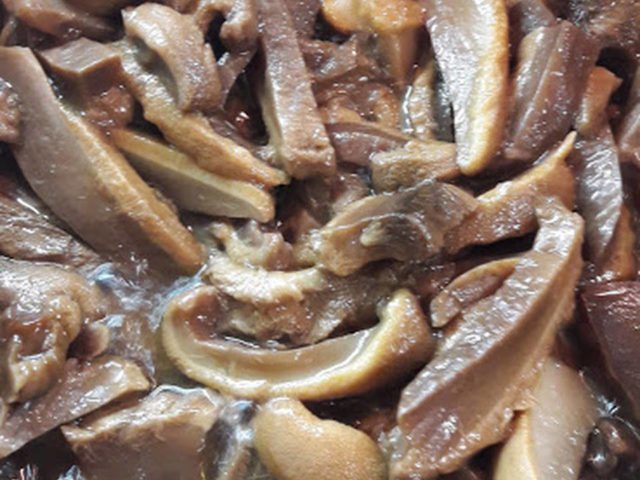

Roast liverwort in nutritional value is not inferior to meat dishes
Liver mushroom recipes for the winter
You can use the liverwort not only fresh. The mushroom is often harvested for the winter; there are many processing recipes.
How to salt a liver mushroom
The easiest way to save the mother-in-law's tongue for the winter is with the help of salting. The algorithm looks like this:
- peeled and cut into thin strips, boil mushrooms for 25 minutes and cool;
- a layer of salt is poured into a sterile large jar, a little pepper and chopped garlic are added;
- a dense layer of mushrooms is laid on top, and then they are again covered with salt and spices.
You need to alternate layers until the jar is full, and the last layer should consist of salt and seasonings. If desired, you can add a little clove, bay leaf and dill to the salting. Add 1 large spoonful of vegetable oil to the filled jar, then seal the container and put it in the refrigerator for 40 days until fully cooked.
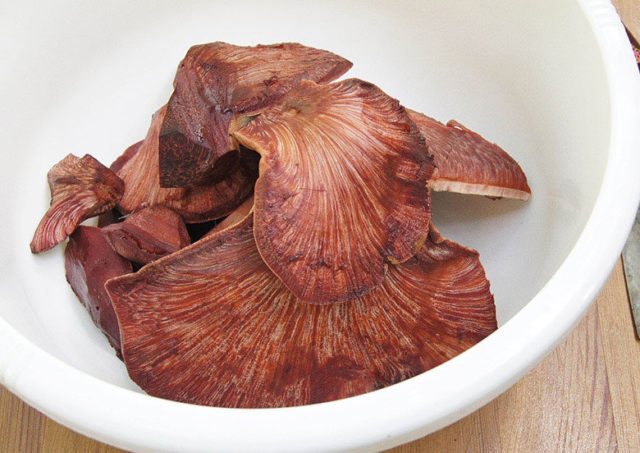

Liverwort can be salted for long storage
How to pickle a mother-in-law mushroom tongue in a cold way
To prepare a cold marinade, you must:
- boil the liverwort in salted water and cool;
- in a sterile jar, lay mushrooms and onions cut into half rings in an amount of 5 onions in layers;
- in a separate container in 500 ml of water, dilute 30 g of salt, add 5 black peppercorns, a couple of bay leaves and 100 ml of vinegar;
- Pour mushrooms with cold marinade and tightly roll up the jar with a lid.
The essence of the cold method is that the marinade does not need to be boiled, so the cooking process takes less time. Pickled liver mushrooms will be ready for use in a week.
How to hot pickle liver mushroom
In a hot way, the liverwort is marinated according to the same scheme, but the marinade is pre-boiled. In addition, the proportions and composition of the ingredients differ.
- 2 kg of liverwort are pre-boiled, this must be done three times for 20 minutes, each time washing the mushroom pulp;
- at the same time, a marinade is prepared in a separate container - a couple of large tablespoons of vinegar, a large spoonful of sugar and salt, 8 allspice peas, 3 bay leaves, garlic and horseradish to taste are added to 500 ml of water;
- boiled mushrooms are laid out in clean prepared jars and boiling marinade is added, and on top - a couple more large tablespoons of vegetable oil.
The jars are rolled up and cooled under a warm blanket, and then put into the refrigerator.


The liverwort is suitable for hot and cold marinating
How to dry mother-in-law mushrooms for the winter
A popular way to harvest the liverwort is to dry it. Its implementation is very simple. Fresh liverwort is cleaned of adhering debris and blades of grass, then cut into small strips and dried in the open air for several hours.
When the juice drains from the liverwort, and the pieces dry out slightly, they will need to be strung on a thread and hung in a dry place with good ventilation. Also, the liverwort can be dried on a baking sheet in an open oven preheated to only 50 degrees. Dried mushrooms are stored in a paper or cloth bag in a dark and dry cabinet, and they can be added to soups and main dishes.
Important! Before drying, the liverwort does not need to be boiled, it is enough just to clean it properly.
How to freeze liver mushrooms
For long-term storage, the liverwort can also be frozen. Fresh mushroom bodies are boiled in salted water and washed, then they are thrown into a colander and wait until all the water is completely drained.
Then the liverwort is cut into small pieces, laid out in plastic containers and sent to the freezer. Frozen mushrooms can be stored for 9 months with all the beneficial properties preserved.
How to cook mother-in-law mushroom caviar for the winter
An unusual option for cooking liverwort mushroom is delicious mushroom caviar. To prepare it you need:
- chop and fry a large onion in olive oil until golden brown;
- add finely chopped medium carrots and 500 g of boiled mushroom pulp;
- fry the liverwort and vegetables for about 15 minutes, stirring regularly;
- salt and pepper the finished dish to taste;
- cool slightly and pass the liverwort and vegetables through a meat grinder.


Liverwort caviar is suitable for use with sandwiches
The crushed ingredients are again sent to the pan and fried for another 10 minutes, after which they are placed in a half-liter sterile jar and poured with 1 large spoonful of vinegar. You can use mushroom caviar with sandwiches or as a filling for pancakes and dumplings.




